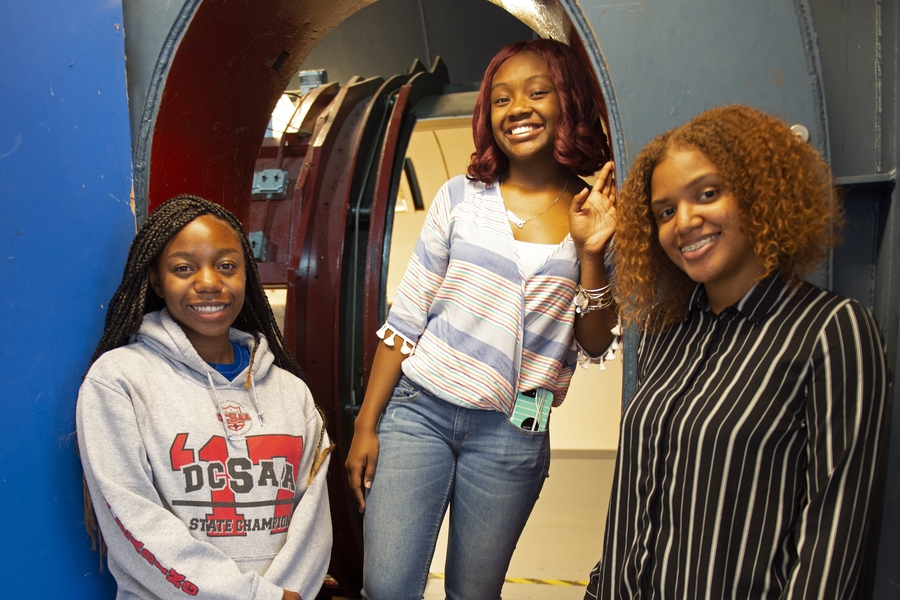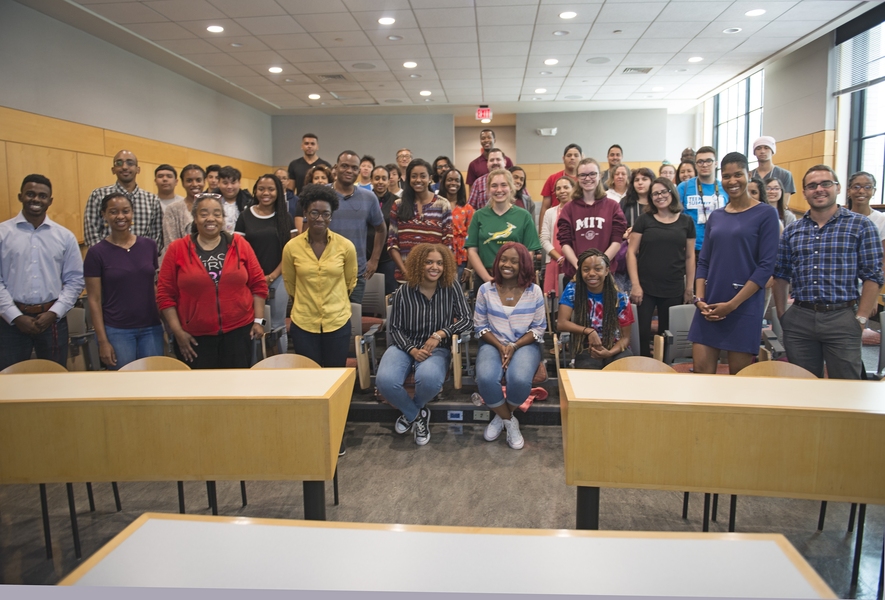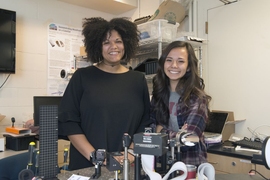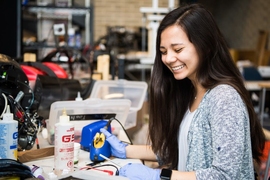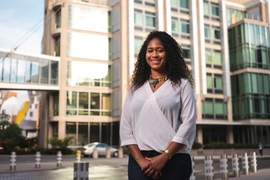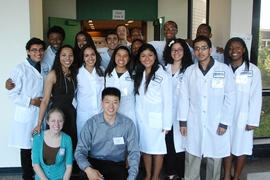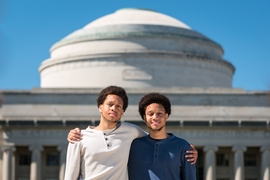Three high school girls whose entry in a NASA technology competition was targeted for derailment by a racist and misogynistic online forum were honored by an MIT group recently to celebrate their achievement in engineering a water-filtration system using aerospace technology.
AeroAfro, an unofficial student group within the Department of Aeronautics and Astronautics, sponsored a campus visit on Aug. 3 for the three girls, in recognition of their placing second in NASA’s Optimus Prime Spinoff Promotion and Research Challenge (OPSPARC). The students toured the campus and presented an overview of their winning entry to an appreciative MIT audience.
AeroAfro's stated goal is to advance the diversity and inclusion initiative of AeroAstro. Graduate student Stewart Isaacs, who coordinated the visit, said members of the group were “disgusted” by the girls’ experience with online racism.
“We sought to support their careers in STEM by connecting them with the cutting-edge science and technology resources at MIT,” he said.
The annual OPSPARC competition challenges students to research NASA technology and develop innovative ways to apply it to everyday situations. OPSPARC 2018 received more than 1,500 entrants from the U.S. and Canada.
In April, OPSPARC announced that the team of Mikayla Sharrieff, India Skinner, and Bria Snell was one of eight finalists in this year’s contest. The 17-year-old juniors attend Banneker High School in Washington, where they are in the school’s STEM program. Theirs was the only all-black, all-female team to reach the finals.
Concerned about lead content in their school's drinking fountain water, the three named their project “From H2NO to H2O.” They used simple equipment including glass jars, water contaminated with copper shards, an electric fan, and filtering floss to develop a filtration system that produces water pure and clean enough to drink. Their research was inspired by NASA water purification technology, and conducted at the Inclusive Innovation Incubator (In3), a technology lab near Howard University, where they also volunteer.
“We were impressed how their project used aerospace technology to help solve the problem of clean water access.” Isaacs said. “This is a problem facing many majority black communities in the United States. Their project presentation gave MIT researchers an opportunity to learn how we can follow their lead to support neglected populations with our own work.”
OPSPARC winners are determined by an assessment of the projects by NASA judges and by public voting promoted via social media, and as soon as the finalists were announced, the voting was underway. But only four days later, users from the anonymous Internet forum 4chan, a site infamous for destructive hoaxes and racist, misogynistic, and homophobic comments, attempted to divert votes from the Banneker team.
The 4chan users launched a cyberattack against the young women, arguing that the black community was voting for them only because of their race, and recommending computer programs that would hack the NASA system and give the advantage to a team of boys. Reacting to the attack, NASA announced an early termination to public voting.
“If you want to be successful in this world, you’ll be targeted,” said Snell at the team's presentation. “But it’s OK. You have to persevere.”
Their determination and belief in their project paid off. In May, NASA’s Goddard Space Flight Center announced that the Banneker team had placed second in the OPSPARC competition.
The team was also awarded a $4,000 grant by Washington mayor Muriel E. Bowser in recognition of their success. The grant was given to In3 and used by the young women to purchase materials to implement their water purification system in the D.C. area.
Sharrieff, Skinner, and Snell hope to expand From H2NO to H2O by incorporating a metal filter to extract chlorine from drinking water, as well. Their project has long-ranging potential, from alleviating the water crises in Flint and Baltimore to improving the potability of water in third-world countries.
When they’re not busy in the lab, the three participate on their school’s cheerleading squad, and Snell runs on the Banneker Bulldogs track team. They all plan to attend college in preparation for science-based careers: Sharrieff in biomedical engineering, Skinner in pediatric surgery, and Snell in anesthesiology.
The students’ visit included a tour of MIT’s Wright Brothers Wind Tunnel, the Media Lab, and other facilities, and introductions to MIT professors and researchers. “What an amazing opportunity,” Sharrieff said of her time on campus. “It opened my eyes to what I want to do in the future regarding graduate school.”
Skinner echoed her teammate. “It was great to discover what life is like at MIT. It’s truly amazing here.”

